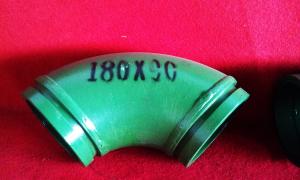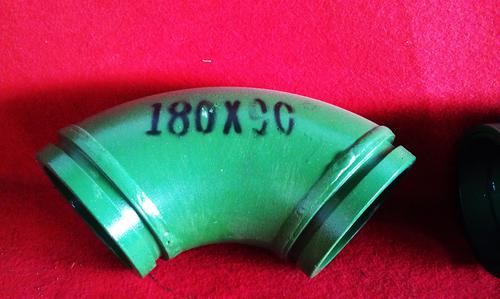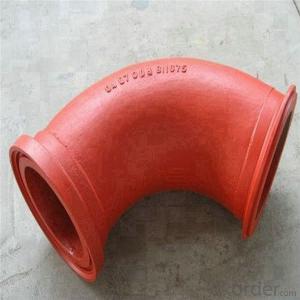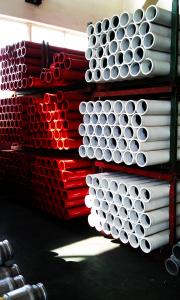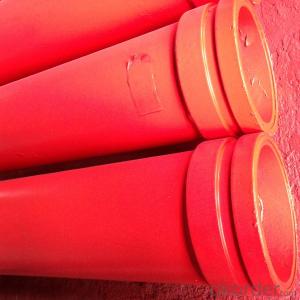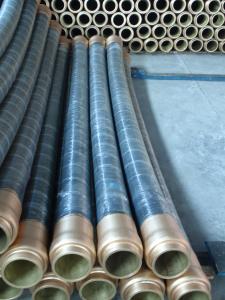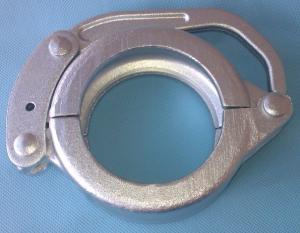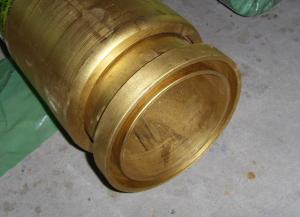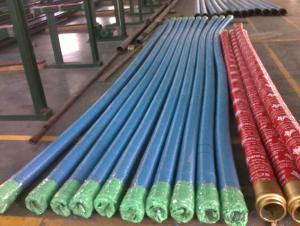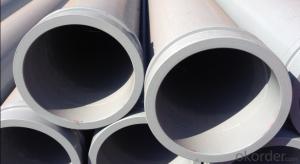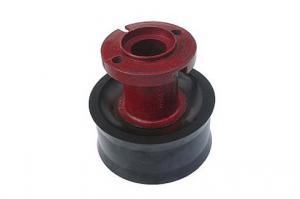Concrete Pump Elbow Pipeline
- Loading Port:
- China Main Port
- Payment Terms:
- TT OR LC
- Min Order Qty:
- -
- Supply Capability:
- -
OKorder Service Pledge
Quality Product, Order Online Tracking, Timely Delivery
OKorder Financial Service
Credit Rating, Credit Services, Credit Purchasing
You Might Also Like
Elbow DN125*R275*90
Elbow DN125*R275*45
Elbow DN125*R275*30
Elbow DN125*R275*25
Elbow DN125*R275*15
Elbow DN125*R500*90
Elbow DN125*R500*45
Elbow DN125*R500*30
Elbow DN150*R500*90
Elbow DN125*R1000*90
Elbow DN125*R1000*90, Schwing ends
Elbow DN125*R350*90, T:4.5mm
Other sizes, please contact with us!!!
- Q: How often should a concrete pump cleaning ball be used?
- To guarantee the cleanliness and optimal operation of the pump, it is necessary to employ a concrete pump cleaning ball after each pumping task or at the very least, on a daily basis. This cleaning ball aids in the elimination of any residue or particles that might have amassed within the pump and its conduits during the pumping procedure. Consistently utilizing a cleaning ball prevents the occurrence of obstructions and hindrances, thereby ensuring a seamless and effective pumping operation.
- Q: What is the function of a concrete pump hopper grate pin?
- The purpose of a pin on a concrete pump hopper grate is to keep the grate securely in place and prevent it from moving or coming loose while concrete is being pumped. The pin acts as a locking mechanism, ensuring that the grate stays stable and does not pose any dangers or interrupt the pumping process. Furthermore, the pin allows for simple removal and replacement of the grate when needed, making it easier to maintain and clean the hopper. In conclusion, the concrete pump hopper grate pin is vital for preserving the reliability and effectiveness of the concrete pumping equipment.
- Q: Can concrete pump spare parts be painted or coated for increased durability?
- Concrete pump spare parts can achieve greater durability by undergoing painting or coating. This protective measure shields them from corrosion, wear, and other types of harm. Applying a layer of paint or coating enhances their resistance against harsh environmental conditions, chemicals, and moisture. Furthermore, certain paints or coatings can provide extra advantages like heat resistance or non-stick properties, further bolstering the spare parts' durability and performance. It is crucial to utilize appropriate paints or coatings that are specifically formulated for the materials and conditions the spare parts will encounter, guaranteeing optimal adhesion and longevity.
- Q: What are the different sizes of concrete pump pipes available?
- The sizes of concrete pump pipes available vary depending on the specific needs and requirements of the construction project. Typically, concrete pump pipes come in sizes ranging from 2 inches to 6 inches in diameter. The most commonly used sizes are 2 inches, 3 inches, 4 inches, and 5 inches. The choice of pipe size depends on factors such as the volume and pressure of the concrete being pumped, the distance the concrete needs to travel, and the type of equipment being used. Smaller diameter pipes are suitable for shorter distances and lower volumes of concrete, while larger diameter pipes are used for longer distances and higher volumes. It is important to select the appropriate pipe size to ensure efficient and safe concrete pumping. Using the correct size of pipe helps to minimize pressure loss, maintain a consistent flow rate, and prevent blockages or clogs in the system. Consulting with a concrete pumping professional or engineer is recommended to determine the most suitable pipe size for a specific construction project.
- Q: What are the different types of concrete pump hydraulic pumps?
- There are several different types of hydraulic pumps that are commonly used in concrete pumps. 1. Gear pumps: Gear pumps are one of the most common types of hydraulic pumps used in concrete pumps. They consist of two meshing gears that push the hydraulic fluid from the inlet to the outlet. Gear pumps are known for their simplicity, durability, and reliability. 2. Piston pumps: Piston pumps are another popular type of hydraulic pump used in concrete pumps. They use reciprocating pistons to move the hydraulic fluid. Piston pumps are known for their high pressure capabilities and ability to handle heavy-duty applications. 3. Vane pumps: Vane pumps are often used in smaller concrete pumps or as auxiliary pumps in larger pumps. They use a series of vanes that rotate inside a housing to move the hydraulic fluid. Vane pumps are known for their compact size and efficiency. 4. Radial piston pumps: Radial piston pumps are typically used in high-pressure concrete pumps. They have multiple pistons arranged radially around a central shaft. The pistons move in and out to create the pumping action. Radial piston pumps are known for their high efficiency and power. 5. Axial piston pumps: Axial piston pumps are commonly used in large concrete pumps. They have multiple pistons arranged in a circular pattern around a central shaft. The pistons move in a linear motion to create the pumping action. Axial piston pumps are known for their high flow rates and pressure capabilities. Overall, the choice of hydraulic pump for a concrete pump depends on various factors such as the size of the pump, the desired pressure and flow rate, and the specific application requirements.
- Q: How often should concrete pump seals be replaced?
- The replacement of concrete pump seals depends on various factors, such as the type of pump, seal quality, operating conditions, and maintenance practices. It is generally recommended to inspect and replace the seals every 500 to 1,000 pumping hours or annually, whichever comes first. It is crucial to regularly inspect the seals to detect any signs of wear or damage. Common indications for replacement include leaks, excessive vibration, reduced pumping efficiency, or visible degradation of the seal material. If any of these issues are observed, it is important to promptly replace the seals to prevent further damage and ensure optimal pump functioning. It is important to note that certain pumps may require more frequent seal replacements due to their design or operating conditions. For example, high-pressure pumps or those used in abrasive environments may experience accelerated seal wear, necessitating more frequent replacements. To extend the lifespan of concrete pump seals, proper maintenance and care are essential. This involves regularly cleaning the pump and seals, ensuring proper lubrication, and following the manufacturer's guidelines for operation and maintenance. Additionally, using high-quality seals and regularly inspecting them for wear can help prolong their longevity. Ultimately, determining the replacement frequency of concrete pump seals involves a combination of regular inspections, adherence to maintenance practices, and consideration of specific operating conditions.
- Q: How often should concrete pump booms be inspected and maintained?
- Concrete pump booms should be inspected and maintained regularly to ensure safe and efficient operation. The frequency of inspections and maintenance will depend on the usage and working conditions of the concrete pump boom. Generally, it is recommended to inspect and maintain the boom at least once every month or after every 250 pumping hours, whichever comes first. During these inspections, it is important to check for any signs of wear and tear, damage, or malfunctioning parts. The boom's hydraulic system, including the hoses, cylinders, and valves, should be thoroughly inspected and tested for any leaks, blockages, or malfunctions. The boom's structural integrity, including the main boom, articulation points, and outriggers, should also be inspected for any cracks, deformations, or signs of stress. Regular maintenance of the concrete pump boom should include cleaning and lubricating all movable parts, checking and adjusting the tension of the cables, belts, and chains, as well as inspecting and replacing any worn-out or damaged components. The boom's electrical and control systems should also be inspected and tested to ensure proper functioning. In addition to regular inspections and maintenance, it is crucial to follow the manufacturer's guidelines and recommendations for specific maintenance intervals and procedures. It may be necessary to perform more frequent inspections and maintenance if the concrete pump boom is subjected to heavy usage, harsh working conditions, or if there are any significant changes in the performance or operation of the boom. By conducting regular inspections and maintenance, concrete pump boom owners can minimize the risk of accidents, prolong the lifespan of the equipment, and ensure that it operates at its optimal performance level. It is always advisable to consult with the manufacturer or a qualified professional to determine the most appropriate inspection and maintenance schedule for a specific concrete pump boom.
- Q: How often should hydraulic filters be replaced in a concrete pump?
- To ensure optimal performance and longevity of the equipment, it is important to regularly replace the hydraulic filters in a concrete pump. The frequency of replacement will depend on factors such as the specific model of the concrete pump, the operating conditions, and the quality of hydraulic fluid used. As a general rule, it is recommended to replace the hydraulic filters every 500 to 1,000 operating hours or at least once a year, whichever comes first. However, it is crucial to consult the manufacturer's recommendations and guidelines for the specific model of the concrete pump, as they may have specific maintenance schedules and intervals. Regularly inspecting the hydraulic filters is also vital to determine if replacement is necessary before the recommended interval. If the filters are clogged, damaged, or show signs of excessive wear, immediate replacement is necessary to prevent potential damage to the hydraulic system. Additionally, if the concrete pump operates in harsh or dusty environments, more frequent filter replacements may be required to ensure proper filtration and prevent contamination. In conclusion, timely and proper replacement of hydraulic filters in a concrete pump is crucial to maintain efficiency and reliability, prevent breakdowns, and prolong the service life of the equipment.
- Q: Which height of concrete pump is the most practical?
- The clay pump truck is modified on a truck chassis. It is mounted on the chassis with a power and motion device, a pump and a mixing device, a cloth arrangement, and other auxiliary devices
- Q: How can one determine the correct weight and balance requirements for concrete pump spare parts?
- To ascertain the appropriate weight and balance specifications for concrete pump spare parts, several factors must be taken into account. First and foremost, consulting the manufacturer's specifications and guidelines specific to the concrete pump model is of utmost importance. These documents typically contain comprehensive information regarding the weight and balance requirements for each spare part. Secondly, it is essential to comprehend the function and purpose of each spare part. Different components vary in weight and can significantly impact the overall balance of the pump. For example, larger elements like booms or outriggers may necessitate precise weight distribution to ensure operational stability. Moreover, considering the intended usage and environmental conditions of the concrete pump is imperative. If the pump is expected to operate in challenging terrains or extreme weather, additional weight might be necessary to enhance stability. In addition to the manufacturer's guidelines, seeking counsel from experts or engineers knowledgeable about concrete pumps can provide invaluable insights. These professionals can analyze the specific requirements of the pump and offer guidance on the appropriate weight and balance specifications for the spare parts. Lastly, conducting thorough testing and inspections after installing any spare parts is crucial. This ensures compliance with the weight and balance requirements and allows for any necessary adjustments to be made. In conclusion, determining the correct weight and balance requirements for concrete pump spare parts necessitates a combination of understanding manufacturer guidelines, considering the purpose and conditions of the pump, seeking expert advice, and performing comprehensive testing and inspections.
Send your message to us
Concrete Pump Elbow Pipeline
- Loading Port:
- China Main Port
- Payment Terms:
- TT OR LC
- Min Order Qty:
- -
- Supply Capability:
- -
OKorder Service Pledge
Quality Product, Order Online Tracking, Timely Delivery
OKorder Financial Service
Credit Rating, Credit Services, Credit Purchasing
Similar products
Hot products
Hot Searches
Related keywords
